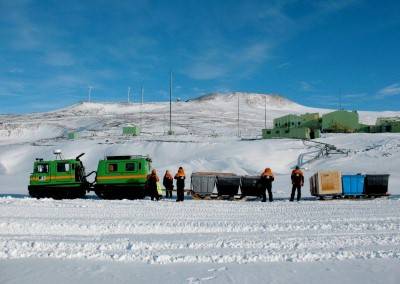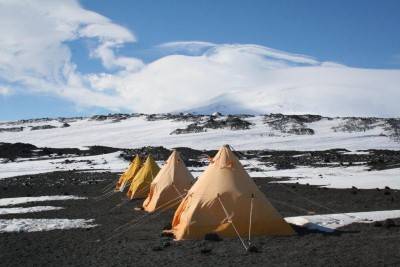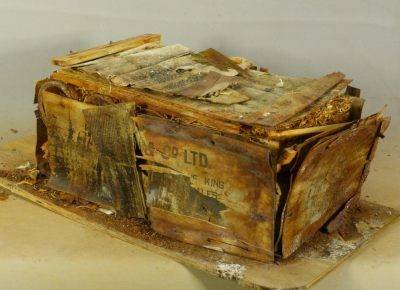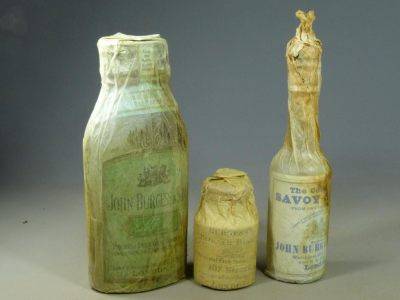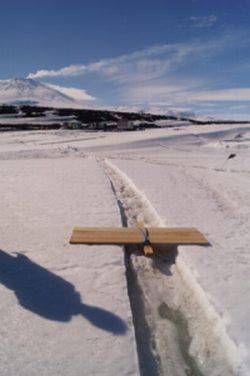Author: Nicola Dunn
Date: 23 December 2013
It’s hard to believe that in early November Sy, Lizzie and I made the trip from Scott Base to our new home which is just a short walk along the beach from Scott’s Terra Nova hut at Cape Evans (built for the 1910-13 British Antarctic Expedition). Travelling in a tracked vehicle known as a Hagglund we headed out across the sea ice following the route frequently taken by members of both Scott and Shackletons expeditions around the shoreline below Mount Erebus. Behind us we pulled sledges of supplies to sustain us for 3 months, and the historic artefacts that we are returning to the hut after conservation treatment.
The Hagglund and sledges on the sea ice outside Scott Base being prepared for the trip to Cape Evans
Our camp is basic but comfortable and we soon settled in and now feel quite at home. Whilst we each have our own tent for sleeping other areas are made up of converted freight containers towed over the ice and left on site from year-to-year. Two adjoining containers are used for cooking, eating and warming-up and the kitchen area has a diesel fired stove on which two pans are constantly melting snow for our water supply. The views from the windows over the sea ice are spectacular.
Our tents on the beach at Cape Evans with cloud formations around Mount Erebus in the background
We have all the basic staple foods for cooking and Sy has constructed an ice block freezer outside for our meat, cheese and vegetables that need to stay frozen when the temperatures edge above zero during the summer. The kitchen has a gas stove and oven, a breadmaker which I love using, and a yoghurt maker. We carefully sort and label our rubbish and the poo from the bucket in the little toilet block before sending it back to Scott Base and NZ for disposal.
We can communicate with the outside world by radio to Scott Base and by a satellite phone to the rest of the world. The electricity for computers and charging batteries is provided by solar panels.
The camp at Cape Evans with our tents in the foreground, the green accommodation containers, red and black conservation laboratory and Terra Nova hut in the far distance
Working in Scotts hut we find ourselves asking questions about the daily lives of the men that lived there, and these often echo questions asked by friends and family as they try to imagine our camp set up. If you have any questions about how we live – just ask.



